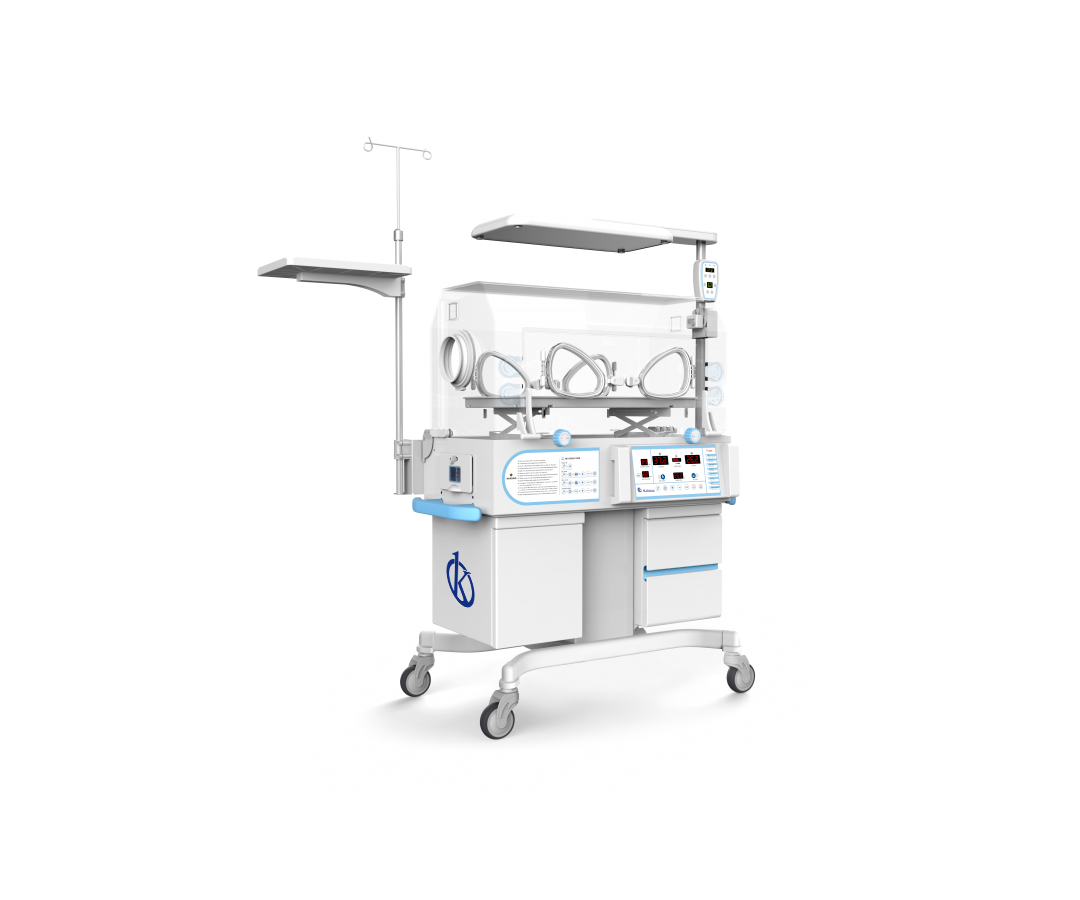Neonatal incubators provide the newborn with a flow of hot air, through a fan or a turbine that takes it from the outside and passes it through a temperature measuring device, passing over a water tank used to moisten the air towards the patient. It is composed of the compartment for the neonate, transparent walls, mattress, platform, rolling base and control module, where all the parameters that will control the temperature are located.
In addition, the incubators have a heat unit that is activated by an electrical signal, which is proportional to the difference between the measured temperature and the reference value preset by the operator. The control variable can be the air temperature of the incubator or the temperature of the skin of the anterior abdominal region of the neonate.
Temperature control of Neonatal Incubators
- Air temperature control mode: Usually, the operator is responsible for monitoring and displaying the reference temperatures, the interior of the incubator and the patient (for which, a thermometer is used). In the event that the incubator control system detects differences between the control temperature and that of the chamber air and that these differences exceed the pre-established range (by the same operator), audible and visible alarms will be triggered; in some extreme cases the heating system is disabled as a safety mechanism.
- Patient skin temperature control mode or controlled servo: To achieve this, the incubator needs to continuously measure the patient’s actual temperature, which is achieved by placing a body temperature sensor; this continuous monitoring is the source of information that feeds back to the system to direct the operation of the heater. As in manual mode, there are alarms that are triggered by temperature differences, in this case, between the reference temperature and the patient’s temperature. The heat exchange between the neonate and its environment is influenced by many factors such as: the size of the neonate, the metabolic rate, the thermal properties of the mattress and the walls of the incubator, the temperature, humidity and speed of the air, the temperature and conditions of the air entering the airways of the neonate, especially if you have an artificial pulmonary ventilation system connected, among other factors. Consequently, it is very important to try to control each of the factors in order to obtain and maintain a neutral thermal environment for the neonate.
Classification of Neonatal Incubators
- Stationary Incubators: In this group are incubators that are located in the areas of emergency, intensive care, intermediate care and transient care and eventually in areas assigned to physiological care
- Transfer Incubators: Transfer incubators, as the name implies, are equipment used to transport neonates either within the medical unit or outside the medical unit. Such transport can be land or air. They are usually lighter and smaller in order to facilitate their mobility and handling to enter or exit emergency vehicles, operating rooms, x-ray rooms, etc. These incubators must operate with alternating current, direct current and/or battery (120 VAC, 12 VDC, 24 VDC). Have the necessary requirements so that the structure is able to be transported in air and on land. Protection against vibrations and external noise. Have limited electromagnetic emissions so as not to interfere with means of air transport.
- Incubators / Radiant Heat Units: Some equipment combines the thermal capabilities of a neonatal incubator with the advantages of a radiant heat unit in terms of easy access to the patient. These types of units have control of temperature, oxygenation and humidity of the air, as well as the temperature of the patient’s skin, both in neonatal incubator mode and in radiant heat unit mode. Conversion between configurations is automatic, eliminating the need to transfer a patient between an incubator and a radiant heat unit.
Neonatal Incubators at KALSTEIN
The YR02188 infant incubator is designed with an advanced thermoregulation system for the neonatal intensive care unit. The ultrasonic humidifier provides low temperature and comfortable airflow inside the incubator. The adjustable humidity range of 40% to 80% provides the right incubation environment for patients. The design of the double-wall chamber prevents the loss of heat and moisture. The servo-controlled humidification system keeps the relative humidity at a constant level in the incubator. Ultrasonic and low-temperature nebulized humidification protects the newborn from bacterial contamination.
The temperature is monitored and the baby’s skin temperature and heating power are distinguished on the screen. The configured and monitored humidity concentration is displayed separately.
The optical design of the incubator with servo-controlled humidity and temperature keeps the baby in a stable environment in virtually any NICU for fragile neonates.
We at Kalstein, have a wide range of equipment totally advanced at a technological level, because we are manufacturers and we are dedicated to you having your best choice in the purchase and at the best prices in the market. We offer you, the best advice and for your comfort, we think of you, visit us in HERE

